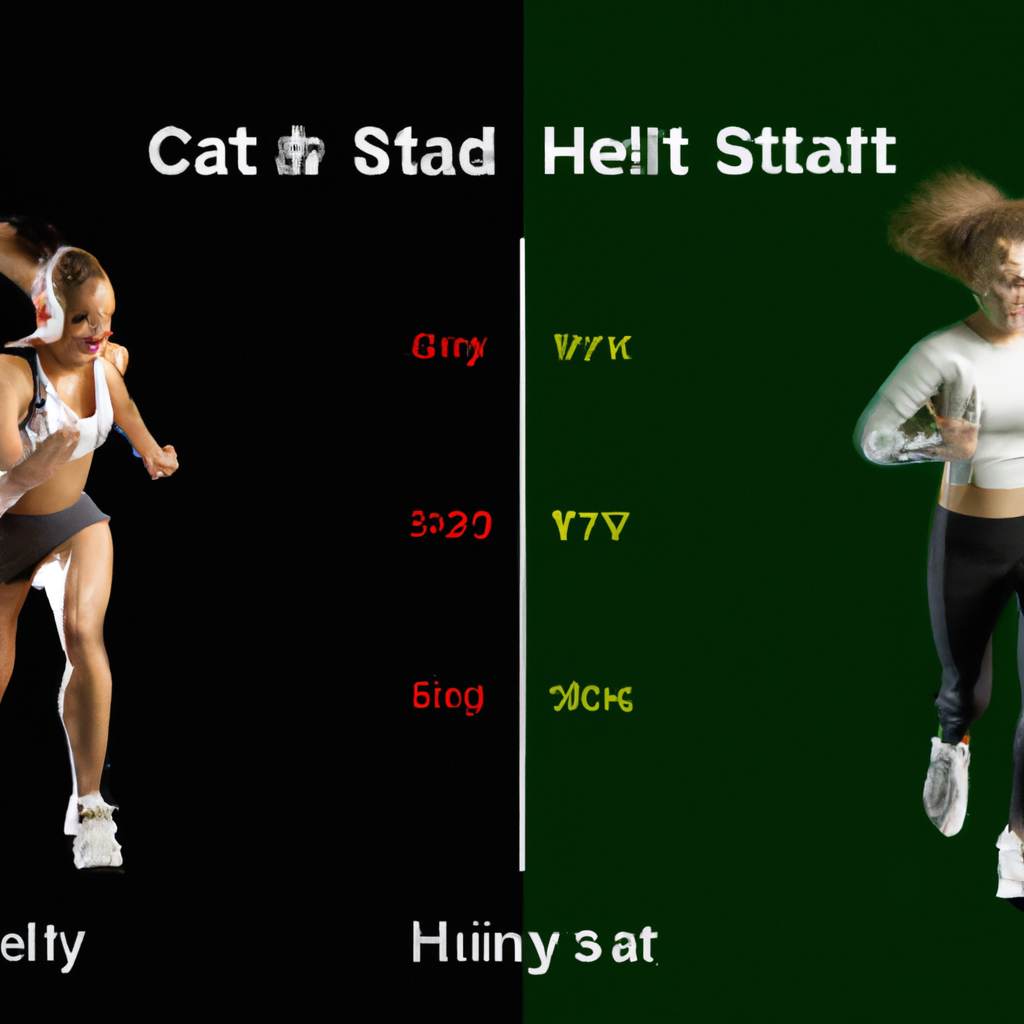HIIT vs. steady-state cardio

# HIIT vs. Steady-State Cardio: Which is Right for You?
In the world of fitness, cardiovascular exercise remains a cornerstone for achieving and maintaining overall health. With various methods available, two popular forms of cardio have emerged: High-Intensity Interval Training (HIIT) and steady-state cardio. Each has its unique benefits, drawbacks, and place in a comprehensive fitness regimen. In this blog post, we’ll explore the differences between HIIT and steady-state cardio, their respective health benefits, optimal nutrition tips, and exercise advice to help you determine which method is right for you.
## Understanding HIIT and Steady-State Cardio
**HIIT** involves short bursts of intense exercise followed by periods of rest or lower-intensity activity. These workouts can range from 20 to 30 minutes and may include exercises like sprinting, cycling, or body-weight movements. The goal is to reach 80-90% of your maximum heart rate during the work intervals.
On the other hand, **steady-state cardio** involves maintaining a consistent, moderate pace of exercise for an extended period, typically 30 to 60 minutes. Activities such as jogging, cycling at a steady speed, or swimming at a relaxed pace fall into this category. The intensity is usually about 50-70% of your maximum heart rate, making it more sustainable over a longer duration.
## Health Benefits
### HIIT Benefits
1. **Efficiency**: HIIT workouts are time-effective, allowing you to achieve significant cardiovascular benefits in a shorter time frame.
2. **Increased Metabolic Rate**: After a HIIT session, your body continues to burn calories at a higher rate during the recovery period—a phenomenon known as excess post-exercise oxygen consumption (EPOC).
3. **Improved Insulin Sensitivity**: HIIT can enhance insulin sensitivity, which is crucial for maintaining healthy blood sugar levels and reducing the risk of type 2 diabetes.
4. **Muscle Preservation**: Unlike prolonged steady-state cardio, HIIT can help preserve lean muscle mass, making it an excellent option for those looking to lose fat without sacrificing muscle.
### Steady-State Cardio Benefits
1. **Endurance Building**: Steady-state cardio is excellent for building endurance and aerobic capacity, making it ideal for long-distance athletes and those looking to improve their stamina.
2. **Lower Injury Risk**: Because it is less intense, steady-state cardio typically comes with a lower risk of injury, making it suitable for beginners or individuals with joint issues.
3. **Mental Health Boost**: The rhythmic nature of steady-state cardio can provide a meditative effect, reducing stress and anxiety levels.
4. **Accessibility**: Steady-state cardio can be performed anywhere, from a treadmill to a public park, making it accessible for all fitness levels.
## Nutrition Tips for Optimal Performance
Regardless of your chosen cardio method, nutrition plays a critical role in your performance and recovery.
1. **Pre-Workout Nutrition**: For HIIT sessions, consume a small meal or snack rich in carbohydrates and protein about 30-60 minutes prior. This could include a banana with nut butter or Greek yogurt with berries. For steady-state cardio, a light carbohydrate-focused snack can provide the necessary energy.
2. **Hydration**: Staying hydrated is vital for both HIIT and steady-state cardio. Drink water before, during, and after your workouts to maintain optimal hydration levels.
3. **Post-Workout Recovery**: After high-intensity workouts, focus on replenishing glycogen stores with carbohydrates and repairing muscle tissue with protein. A smoothie with protein powder, spinach, and fruits can be an excellent post-workout option. For steady-state cardio, a balanced meal with protein, healthy fats, and complex carbohydrates will support recovery.
## Exercise Advice
1. **Mix It Up**: Incorporating both HIIT and steady-state cardio into your routine can yield the best results. Consider alternating between















Post Comment